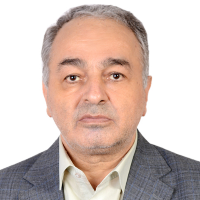Clustering of observation wells of Khoy Plain aquifer from the view of water quality using the K-Means
The aim of the present study is regionalization of groundwater observation wells of Khoy plain into distinct clusters based on quality of water using the K-Means method. The recorded data of fourteen groundwater quality parameters including the Total Cations, Total Anions, Electrical Conductivity (EC), pH, Total Dissolved Solids (TDS), Sodium Absorption Ratio (SAR), Total Hardness (TH), Sodium percent (%Na), Magnesium (Mg2+), Calcium (Ca2+), Sodium(Na), Sulfate (SO42-), Chloride (Cl-), Bicarbonate ) were used. These data gathered for the 26 observation wells in the time period of 2001-2003. The optimum number of clusters was found by optimization method in K-means clustering algorithm assuming to be between two and five. In order to determine the groundwater quality to use in agricultural and drinking purposes the Wilcox diagram was used. The results showed that groundwater of Khoy plain can be classified into the four distinct classes. The first class covers an area equal to 214.3 km² (51.14 % of the total area of the plains), which has very favorable to use in agriculture and drinking use. The second region covers an area of 50.1 square kilometers (11.95 %) and the third region’s area was 52.7 km² (12.57 %), respectively. The third region has poor quality water and area of this region is equal to 9.101 km² (24.31%). The high values of EC and SAR were found in the third cluster, which led to groundwater quality to be poor. In general, it can be concluded that more than the 50 percent of the Khoy plain’s groundwater had desirable chemical quality. It is recommended to protect groundwater in Khoy plain from pollution risk and overexploitation. For sustainable use of groundwater, it is recommended to protect groundwater by prohibiting agriculturalists and other users from overexploitation.
-
Monitoring and Predicting Changes in Reference Evapotranspiration in the Moghan Plain According to CMIP6 of IPCC
*, Pouya Allahverdipour
Journal of Environment and Water Engineering, -
Estimation of Tabriz population based on exponential and logistic growth models for water scarcity analysis
Saeed Imani *, , Esmaeil Asadi, Ahmad Fakheri Fard
Journal of Applied Research in Water and Wastewater, Summer- Autumn 2024


